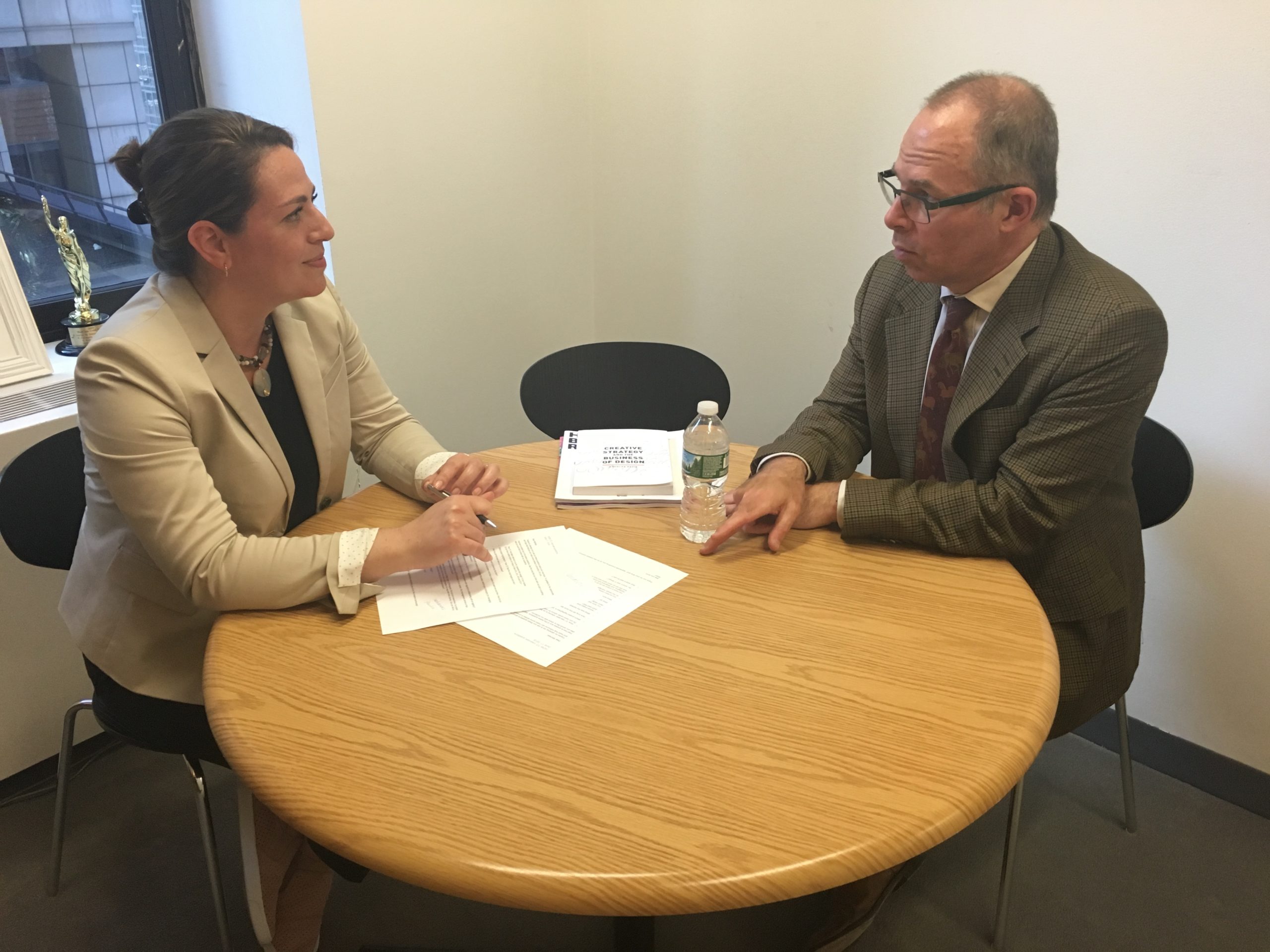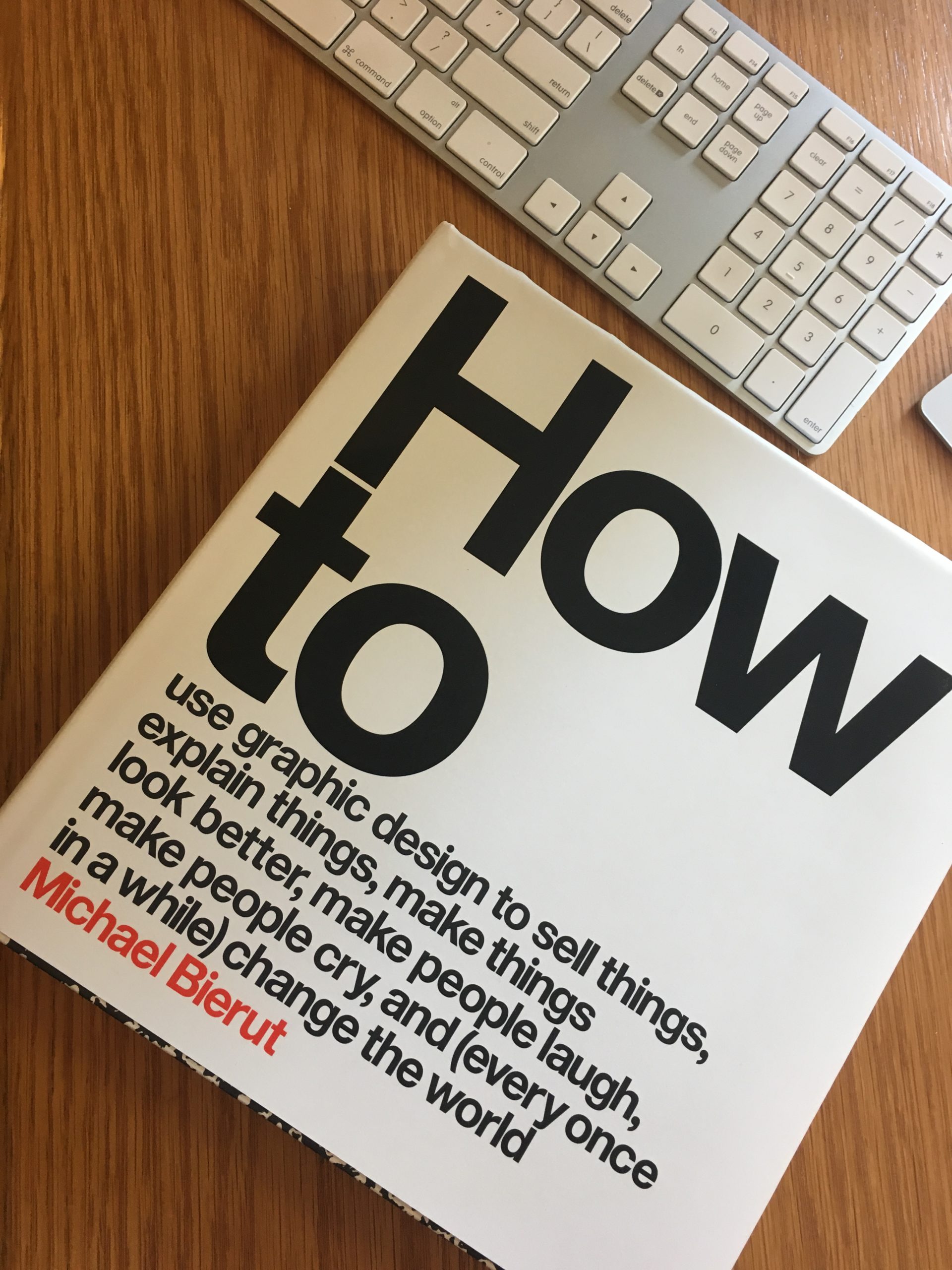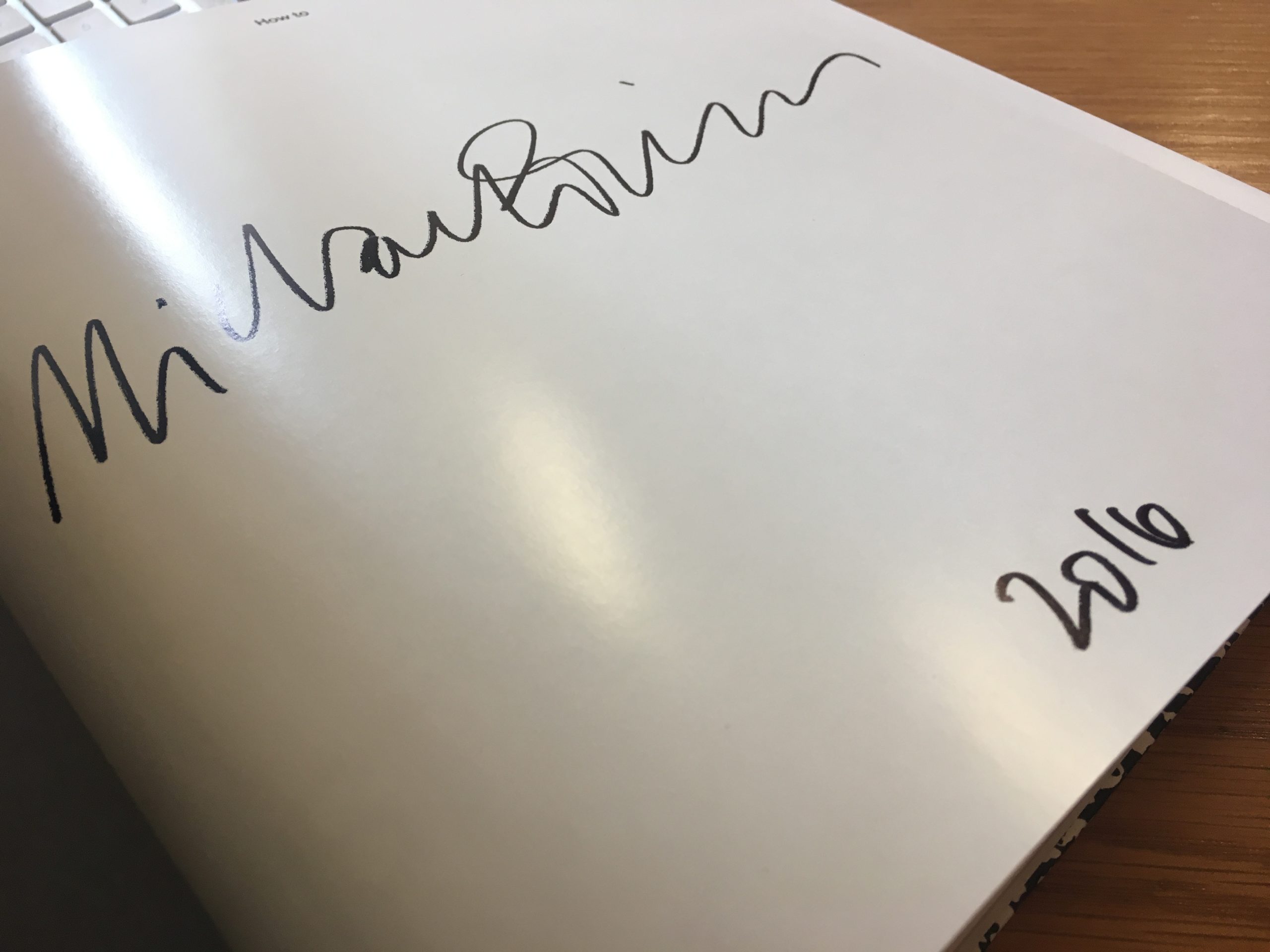In our final interview with Michael Beirut he shared some solid advice: “You don’t learn anything by talking; you learn by listening”.
Robin: “You’ve been managing design staff for the bulk of your career. Any management advice or tips for the design managers and leaders out there trying to hone their skills?”
Michael: “The advice I tend to give people at any age is what made me more effective as a designer, design leader or even a manager: You don’t learn anything by talking; you learn by listening, and that’s the only way you learn anything actually. When I used to hear about something that’s going wrong, I would get scared and think, I’ve got to go on the defense and figure out a way to fix this thing through sheer force of will. But now I know about the idea of simply calling the person up and saying, “I hear you don’t like that thing or I’m sorry they got messed up. I still can’t figure out how it happened, can we talk it through?” You know, it’s just that it’s amazing once you do that. If they’re not happy with something or they like everything except that one thing, that one thing, most of the time, is the thing that I knew wasn’t 100 percent there anyway.
So part of what makes managing design much easier is that you don’t view it as sort of a competitive game that has winners and losers but a fun game. It’s really one of those things where everyone could win if everyone’s collaborating and if you’re patient enough to figure out what everyone’s agenda is and how you can help them achieve it.
You guys think a lot at InSource about the specific challenges that in-house designers face and what creative people face. So you know better than me what those are. But it always strikes me that a consulting designer seems to have the luxury of parachuting in, coming up with a bunch of ideas and not having to take the responsibility for following through on them. It’s a matter of not having to take the day-to-day—sometimes the hour-by-hour—responses that in-house designers get from the frontline. So I can have the option of simply persuading a few powerful people at the top of our organization to do something, and then a million other people have to sort through the repercussions of that, right? The reason people admire that work is, in part, because I really had talented people on the client side who were supporting the ideas, who were authoring the ideas, who made sure that we are all following through on the ideas so we were able to use the depth of their knowledge about their situation, their company and their institution.
Paula Scher talks about this a lot more; she said she’d opt to do nothing but set up effective in‑house design departments. She thinks that anything you see and admire is almost always because there are really talented people on the inside who are supporting the work, making it happen and taking it forward.
There’s also some thinking that I’ve just started to see this year where there’s this obsession with innovation as a goal and as an ideal and as the one and only true purpose of anyone’s work is to be innovative, and that’s great. Who doesn’t want to be known for their innovative and design innovation, which are really linked both in the popular mind and I think in the minds of a lot of designers and minds who work with designers?
But there have been a couple of articles—and I think there’s a conference—about if we spent less on innovation and more on maintenance, the world would be a better place. The reason things work isn’t just because of an amazing idea at the very beginning. They work because there was an amazing idea that was sustainable so people are able to contribute to it and make it stronger over time rather than just watch the slow and inevitable degradation of it, right?
A lot of times when I’m doing work for bigger organizations, I try to figure out how few elements to provide that would give the people on the inside enough to work with if they could really make connections that I couldn’t think of and make connections they can’t think of today because they get a different challenge tomorrow. I’m not favored to be there tomorrow or the day after that but they will be, and how can they figure out to do that. And I think that goes against what designers tend to do. I think all of us—whether in-house or out-house—just love the idea of something that’s complete and finished and fully developed; it’s the perfectly frosted cake with the cherry on top, you know. I think so much of the work you see in the world that’s actually worthwhile and admired in terms of design, particularly in terms of large-scale, complex design problems, is because really talented people didn’t take it on as a project that had a phase 1, phase 2, phase 3, phase 4, invoiced it and then done with it. Instead, they owned it and committed to it, and part of this commitment involves knowing it so well, inside and out, that they know all they can do and they know what people needed to do but they are able to retain within themselves the ability to push it forward so it does unexpected things that no one imagined when it was born.”
Robin: “It’s a full circle process in that all these different types of people and their expertise are involved to make it work. In my experience, it does seem as if you need both sides of the fence that you didn’t see concepting and design taking and maybe some fresh perspectives. And it’s all about that in-house group that loves their brand, knows their organization and wants to take it forward and make it explode.”
Michael: “Yeah! And boy, you know, there’s nothing that I like more—and it’s true for my whole team—that we are working with people on the inside of the organization who know it well and who are able to navigate the organization with confidence, who are really ambitious on behalf of the people they work for. I think there’s so much to work in that sort of situation, and that’s tough because I don’t think it’s just sheer force of will. There are places where the management confidence isn’t there in the group so they don’t value it. Usually there are a lot of problems above and beyond, and that’s what the poor in-house designers are putting up with. I think if they are treated that way, God only knows what else is happening to people there. And so not every place has an unlimited potential, not every project has unlimited potential and not every designer has unlimited potential; it’s just the way the world is. But a lot of times it’s just a matter of people, and it’s just understanding what people are trying to get out of their jobs from day to day and what their ambitions are overall. It’s not always true but a lot of times you can figure out a way to make design play into those desires.”
Robin: “So what’s next in design?”
Michael: “I just agreed with Jessica Helfand to teach a course in Design Management at Yale, and this is a big, serious commitment. It’s not just like a little lecture for a few times. We are going to put together some serious coursework and start to figure on a way to introduce or reinforce a design culture at this great business school for the MBA program.
Jessica received both her BA in graphic design and architectural theory and her MFA in graphic design from Yale University, and she and I both taught in the School of Art. I taught a little bit in the School of Management before so we know the place, and I think there’s an interesting opportunity to figure out what managers, future clients, future in-house managers, future CEOs, CFOs and CMOs need to be exposed to in terms of design to understand what its potential is.
One of its strengths is the walls between departments and schools are more porous than permeable. So one of the opportunities, I think, is what happens if there are architects or design students taking this class alongside the business students? Also, not just that, but what if there are medical students, or forestry students or law students taking the class? One of the great things about design is it’s a field of knowledge on one hand but it’s also a way to synthesize different fields of knowledge; it’s a way of thinking as well as stuff to think about, and I think that’s one of the fun things. It reaches right in the middle of all these really brilliant academics centered within Yale who can really all have so much potential in making contributions to what we know about design and what makes it so cool.”
Robin: “That’s amazing. I don’t know how you have time for all of this. Thank you for everything you do for the creative community!”








